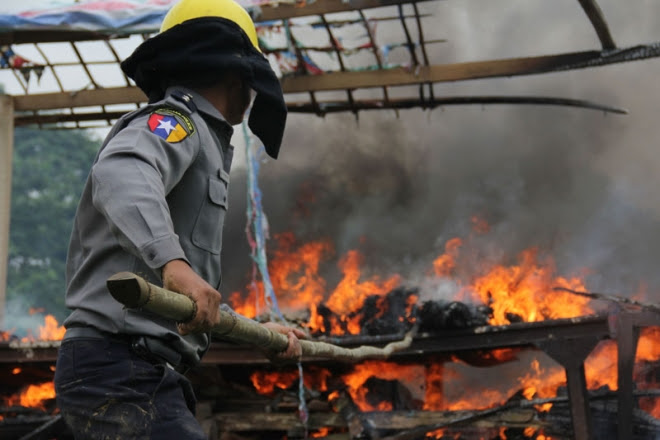Myanmar in 2013, received increased amounts of precursor chemicals from India and stable amounts of the chemicals from China that could be used to make illicit drugs, a report by the United Nations Office on Drugs and Crime World found.

The 2014 UNODC World Drug Report – released on June 26 – said it found a disturbing increase in supply of the chemicals ephedrine, pseudoephedrine and ancetic anhyndride that can be used to make methamphetamines and heroin.
UNODC representative for Southeast Asia and the Pacific, Jeremy Douglas, said the precursor chemicals are themselves not made in Myanmar.
“The two largest manufacturers [of ephedrine, pseudoepredrine and ancetic anhyndride] are India and China, right next door,” Mr Douglas told a briefing at Yangon’s Drug Elimination Museum on June 26. “You cannot make [heroin and methamphetamine] without precursor chemicals.”
UNODC country manager for Myanmar, Jason Eligh, said it was difficult to estimate the production of synthetic drugs in Myanmar, citing the mobility of synthetic drug labs.
“As long as there is a facility, the chemicals and expertise, can make [synthetic drugs] wherever you want,” Mr Eligh said. “Obviously those who produce it, produce it where the government has limited control.”
Myanmar’s Minister of Home Affairs reported 10 million amphetamine-type stimulant pills (including methamphetamine) and 13,482 kilograms of ephedrine and pseudoepredrine were seized in 2013.
“Crystal meth [methamphetamine] seizures have been rising year after year for the last few years,” Mr Douglas said.
He said increased law enforcement was among the reasons for larger amounts of seizures, but added that the increase of synthetic drugs into Myanmar had led to the findings.
The 2014 UNODC Drug Report also found that Myanmar has seen a staggering increase in poppy cultivation for opium, from 21,500 hectares (53,127 acres) in 2005 to 57,800 hectares (142,827 acres) in 2013.
Opium production has also increased, with Myanmar producing 870 tonnes of opium in 2013 compared with 312 tonnes of opium in 2005, the report said.
In addition, 12,288 hectares (30,364 acres) of poppy fields were destroyed in 2013 compared with 3,907 hectares (9,654 acrews) in 2005.
Regarding control of precursor chemicals entering Myanmar, Mr Douglas said Myanmar needed to establish better border control and better information sharing with India and China.
By controlling the flow of precursor chemicals, Myanmar could prevent synthetic drug production and continuing export to neighbouring countries such as Thailand and Laos.
“From 2000 to 2010 there was a jump in chemical production in Asia, primarily in China and India,” Mr Douglas said.
“It is very difficult for those countries to regulate their industry to control the export [of chemicals] but also the diversion [of chemicals] from legitimate supply.”



